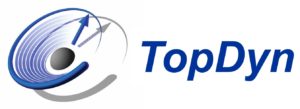

Seminar über die Physik der kondensierten Materie (SFB/TRR173 Spin+X und SFB/TR288 Kolloquium, TopDyn-Seminar)
Aug. 10, 2023 at
2 p.m.
in
01-122 Newton Raum
Univ-Prof. Dr. Jure Demsar
Univ.-Prof. Dr. Hans-Joachim Elmers
Univ.-Prof. Dr. Mathias Kläui
Univ.-Prof. Dr. Thomas Palberg
Physics of Metal/Si Interfaces for the Development of Spin MOSFETs
Dr. Naoto Yamashita (Department of I&E Visionaries Faculty of Information Science and Electrical Engineering Kyushu University)
Spin Metal-Oxide-Semiconductor Field-Effect transistor (MOSFET) is a promising device [1] that utilizes the fundamental material in electronics: silicon (Si). In 2007, the electrical injection of spin current into Si was achieved, overcoming the challenge of "conductance mismatch" [2]. Over the past decade, extensive research has been devoted to studying the transport of spin current in Si, resulting in the realization of room temperature operation [3].
In our investigations to enhance the magnetoresistance ratio, we have focused on understanding the physics of the metal/Si interface and proposed three different approaches [4-6]. Firstly, we have made progress by improving the crystal alignment between the spin source material and the tunneling barrier through moderate-temperature thermal annealing [4]. Secondly, we have demonstrated the spin-dependent Seebeck effect, a novel spin caloritronic effect, for the first time using semiconducting materials [5]. Lastly, we have achieved a significant reduction in electrical resistance at the interface by implementing ohmic contact on non-degenerate n-type Si with ferrimagnetic material, resulting in a 100-fold improvement [6].
By leveraging these technologies, we anticipate a notable improvement in the magnetoresistance ratio, bringing us closer to practical device applications.
Reference
[1] S. Sugahara and M. Tanaka, Appl. Phys. Lett. 84, 2307 (2004).
[2] I. Appelbaum, B. Huang, and D. J. Monsma, Nature 447, 295-298 (2007).
[3] T. Tahara, Y. Ando, M. Shiraishi, et al., Appl. Phys. Express 8, 113004 (2015).
[4] N. Yamashita, Y. Ando, M. Shiraishi, et al., AIP Advances 10, 095021 (2020).
[5] N. Yamashita, Y. Ando, M. Shiraishi, et al., Phys. Rev. Applied 9, 054002 (2018).
[6] N. Yamashita, M. Shiraishi, Y. Ando, et al., Phys. Rev. Materials 6, 104405 (2022).